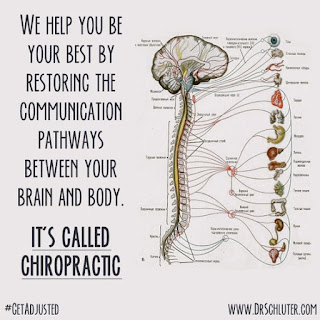You may be sitting, standing, walking, or even running in a way
that puts uneven stress on your body, which over time, results in pain. Also,
poor posture can cause soft tissue damage, another cause of pain. By correcting
your posture and bio-mechanics, we greatly reduce the chance of pain returning
in the future!...
You only have to look at a spine to see how its various curves may affect the pressure areas on discs, facette joints, spinal nerves, ligaments and muscles. Correct and incorrect posture can alter those curves and result in different stresses by changing the center of gravity.
Posture and biomechanical imbalances
Posture starts at the head and works its way down or on the other hand starts at the feet and works its way up. Even in books looking at the progress of homo sapiens (homo erectus) in evolution, man is portrayed as somewhat hunchbacked. The head protrudes forward on the neck, the shoulders are rounded, the stomach protrudes forward with a sway back, and the knees are fully extended with the hips tilted back. As a result the feet are more likely to be pronated causing possible patellar (kneecap) tracking problems and weak VMO (vastus medialis obliquus) muscles of the thigh. Tightness and weakness in the medial gastrocnemius muscles of the calves, bunions of the big toes and clawing appearance of the other four toes may also occur. Looking at the spine this kind of posture causes many biomechanical imbalances in muscle tone resulting in many possible problems.
Effect of Nerves
Before we go into the problems of muscles we need to remember the nerve structures. Current research has reminded us that muscles and tendons are not the only things that have to stretch and slide as the body moves. Nerves have been the forgotten ingredients over many decades of sports therapy. Nerves have to be free to move with every action and before each muscle stretches the nerve or its coverings (meninges) will stretch first. The interesting thing to remember is any bruising around areas where nerves exit from the spine (such as after a whiplash injury) or where nerves pass through muscles (such as after a fall), can cause adhesions around the nerve coverings and stop the necessary movement. What happens then? Well when nerves are caught up through adhesions or scarring and prevented from moving they get very irritated. The first thing an irritated nerve does is to start to send messages to the muscles to tighten up. So the vicious cycle starts. Tight nerves lead to tight muscles. This is called Neuromeningeal tension.
We have all come across people who seem not to be able to stretch out they hamstrings no matter what. Well it's not because they are lazy or simply don't stretch enough. It's because they have neuromeningeal adhesions which cause the nerves to send signals to the muscles to tighten up at the beginning of every stretch. So the most important stretch is in fact the nerve stretch because only by loosening up those adhesions will you finally be able to stretch the muscles to their full potential. Fortunately we now have very specific stretches which can loosen those nerve adhesion in a relatively short time.
Muscle Balance
So after the stretches let's look at the muscle balance again. Starting from the top, many headaches & neck problems are related to poor balance in the nuchal (neck) muscles. Many upper arm problems often misdiagnosed as carpal tunnel, tennis elbow etc are often due to nerve related neck tension. From there poor control in the shoulder girdle with weak rhomboids can lead to rotator cuff and other shoulder problems. Chest tightness or pain may also be caused by a stooped thoracic spine with stiffness and limitation of required rotation.
Further down a sway back can cause tight hip flexor (iliopsoas) muscles, quadriceps and tension of the nerve roots leaving the lumbar spine. This can lead to increase rotation forces in the lower limb also causing more pronation at the foot. Pronation also increases the tightness in the calf muscles which in turn leads to further pronation. This biomechanical problem is often associated with tracking problems of the knee cap called Patello Femoral Dysfunction (PFD). The result is a wear and tear of the under surface of the knee cap causing pain and stiffness in the knee. The VMO's are usually wasted or underdeveloped.
As I mentioned above the problem may start at the feet. Pronated feet causing tight gastrocnemius muscles with PFD and even hip and low back problems. Let's look at a couple of examples to illustrate the above.
Source:
This article was written by Sports and Orthopaedic Physician Dr George Janko - Medical Director of McKinnon Sports Medicine



Comments
Post a Comment